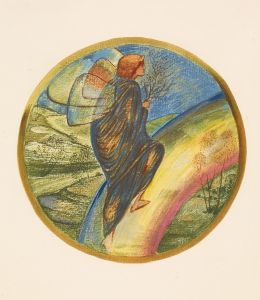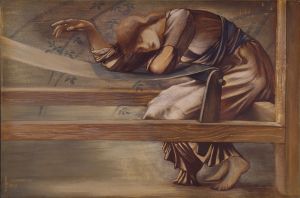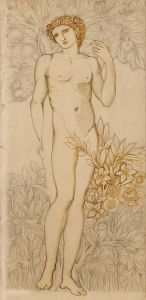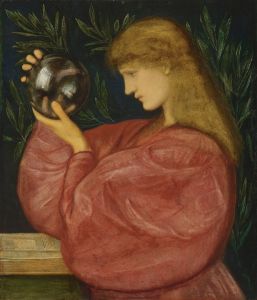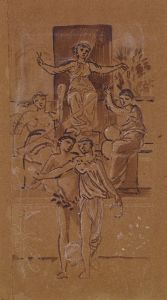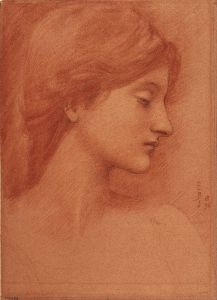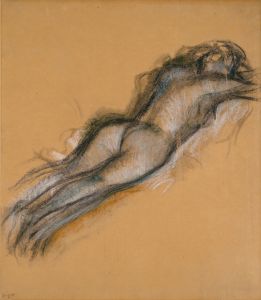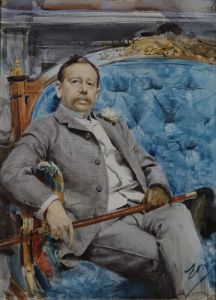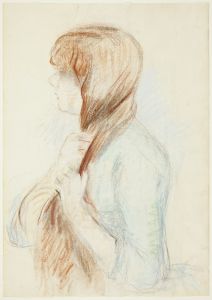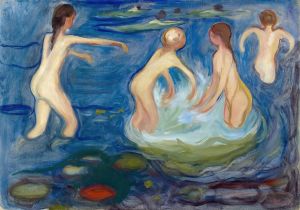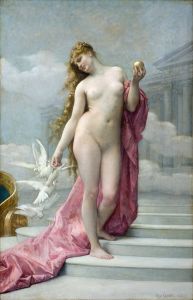
Female nude study
A hand-painted replica of Sir Edward Coley Burne-Jones’s masterpiece Female nude study, meticulously crafted by professional artists to capture the true essence of the original. Each piece is created with museum-quality canvas and rare mineral pigments, carefully painted by experienced artists with delicate brushstrokes and rich, layered colors to perfectly recreate the texture of the original artwork. Unlike machine-printed reproductions, this hand-painted version brings the painting to life, infused with the artist’s emotions and skill in every stroke. Whether for personal collection or home decoration, it instantly elevates the artistic atmosphere of any space.
"Female Nude Study" by Sir Edward Coley Burne-Jones is a notable work that reflects the artist's dedication to the Pre-Raphaelite movement and his fascination with the human form. Burne-Jones, an influential British artist of the 19th century, was known for his romantic and often mythological subjects, as well as his meticulous attention to detail and form.
The study of the female nude was a common practice among artists of Burne-Jones's time, serving as an essential exercise in understanding human anatomy and capturing the subtleties of light and shadow on the body. This particular study exemplifies Burne-Jones's skill in rendering the human figure with grace and sensitivity. His approach to the nude was not merely academic; it was imbued with a sense of idealism and beauty that was characteristic of the Pre-Raphaelite Brotherhood, a group he was closely associated with.
Burne-Jones's work often drew inspiration from classical mythology, medieval romance, and literature, and his studies of the human form were no exception. The "Female Nude Study" is likely to have been part of his preparatory work for larger compositions, where figures were often depicted in elaborate, dreamlike settings. His nudes are characterized by elongated forms and a certain ethereal quality, which became a hallmark of his style.
The Pre-Raphaelite movement, which Burne-Jones was a part of, sought to return to the detail, intense colors, and complex compositions of Quattrocento Italian art. This movement was, in part, a reaction against the academic art standards of the time, which the Pre-Raphaelites felt had become too mechanistic and formulaic. Burne-Jones, through his studies and finished works, contributed significantly to this movement by emphasizing beauty, emotion, and a connection to the past.
In "Female Nude Study," Burne-Jones's technique can be observed in the delicate rendering of the figure's contours and the subtle play of light across the skin. His use of line and shading demonstrates a deep understanding of the human form, while also conveying a sense of serenity and introspection. The study is not just an exercise in anatomy; it is a reflection of Burne-Jones's artistic philosophy, where the idealized human form becomes a vessel for exploring themes of beauty and transcendence.
Burne-Jones's influence extended beyond his own works, impacting the broader art world and future generations of artists. His dedication to the Pre-Raphaelite ideals and his unique approach to the human figure have left a lasting legacy in the history of art. The "Female Nude Study" is a testament to his skill and vision, capturing the timeless allure of the human form with elegance and depth.
While specific details about the creation and history of this particular study may not be extensively documented, it remains an important piece within Burne-Jones's oeuvre, illustrating his mastery of form and his contribution to the artistic movements of his time.





